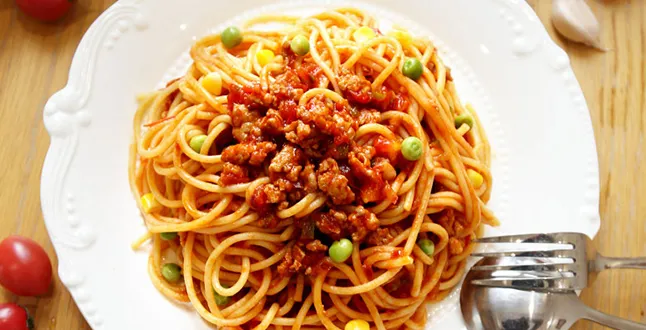Homemade Pasta Freshness for Your Delicious Dishes
Exploring the World of Fresh Pasta A Culinary Delight
When one thinks of Italian cuisine, the mind often drifts to the warm embrace of fresh pasta. While dried pasta has its place in many households, nothing quite compares to the texture, flavor, and authenticity that fresh pasta brings to the table. This article delves into the world of fresh pasta, exploring its history, preparation, and the many delightful ways to enjoy it.
The History of Fresh Pasta
Pasta has a rich history that dates back thousands of years, with its origins often traced to Ancient China and the Mediterranean region. The Italian version we know today has undergone many transformations, yet fresh pasta remains a cornerstone of Italian cooking. The earliest mentions of pasta in Italy date back to the 12th century, and by the Renaissance, pasta became widely popular across the country. Unlike its dried counterpart, which is typically made from durum wheat semolina, fresh pasta is made with eggs and flour, lending it a softer, more tender texture.
The Art of Making Fresh Pasta
Creating fresh pasta is often considered both an art and a science. The basic ingredients include flour, usually 00 flour for its fine texture, and eggs. The ratio can vary depending on the desired outcome; more eggs result in a richer pasta, while more flour yields a dough that can be rolled out thinner. The process begins with creating a mound of flour on a clean surface, making a well in the center to hold the eggs. As the dough begins to come together, it’s kneaded until smooth and elastic, often taking around 10 minutes.
After resting, the dough can be rolled out and cut into various shapes, from lasagna sheets to fettuccine. Some may choose to use a pasta machine for uniform thickness, while others prefer the handcrafted charm of rolling by hand. For an extra flavor dimension, innovative cooks can infuse their dough with spinach, beetroot, or herbs, creating colorful and delicious variations.
Cooking Fresh Pasta
fresh pasta

Once the fresh pasta is prepared, the cooking process is quick and straightforward, a delightful aspect that makes it a favorite for home cooks and chefs alike. Fresh pasta typically cooks in just 2-4 minutes in a pot of salted boiling water. The cooking time may vary depending on the thickness and shape of the pasta. It is essential to taste the pasta to achieve the perfect al dente texture — slightly firm to the bite.
Pairing Fresh Pasta with Sauce
The beauty of fresh pasta lies in its versatility, lending itself to a variety of sauces. A classic pairing is a simple sage butter sauce, where fresh sage leaves are sautéed in butter until crispy, tossed with the pasta, and finished with a sprinkle of Parmesan cheese. Alternatively, a rich ragù or a light olive oil and garlic sauce can enhance the flavors of hand-rolled pasta shapes like tagliatelle or pappardelle.
For those seeking a fresh twist, a lightly dressed cherry tomato and basil sauce can add vibrant flavor without overwhelming the pasta. The freshness of the ingredients can elevate the dish, making it a perfect choice for summer evenings. The beauty of pairing fresh pasta with seasonal vegetables can create a delightful harmony of flavors and textures.
The Joy of Fresh Pasta
Beyond its delightful taste and texture, fresh pasta represents a connection to tradition and authenticity in cooking. Making pasta from scratch can be a wonderful bonding experience, whether it’s a family gathering or a culinary class. The process encourages creativity; the possibilities are endless with shapes, flavors, and sauces.
Fresh pasta is not just a dish; it’s an experience. From the tactile pleasure of kneading the dough to the aromatic scents of herbs and garlic simmering on the stove, homemade fresh pasta allows cooks of all levels to immerse themselves in the joys of cooking. Serving a dish of freshly made pasta can transform a simple dinner into an extraordinary occasion, bringing people together around the table.
In conclusion, fresh pasta embodies the essence of Italian culinary culture—simple yet extraordinary. As you explore the world of fresh pasta, remember that it’s not just about the final dish but the joyful process that makes it all worthwhile. So roll up your sleeves, gather your ingredients, and embark on a delicious journey—your taste buds will thank you!
-
Unleash Your Inner Chef with Delectable Italian Pasta CreationsNewsAug.01,2025
-
Savor Health and Flavor: Irresistible Soba Noodles for Sale Await!NewsAug.01,2025
-
Nourish Your Body with Premium Organic Ramen - A Culinary Delight AwaitsNewsAug.01,2025
-
Elevate Your Dishes with Our Exquisite Kinds of Egg NoodlesNewsAug.01,2025
-
Dive into Flavorful Convenience with Our Ramen OfferingsNewsAug.01,2025
-
Discover Exquisite Types of Naengmyeon and Chilled Soba NoodlesNewsAug.01,2025
-
Is Whole Wheat Pasta Healthy?NewsMay.30,2025
Browse qua the following product new the we

















































































































